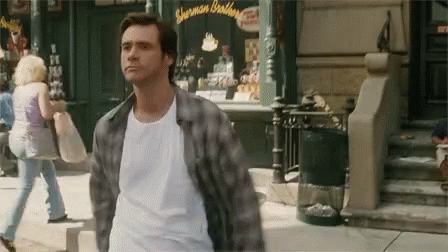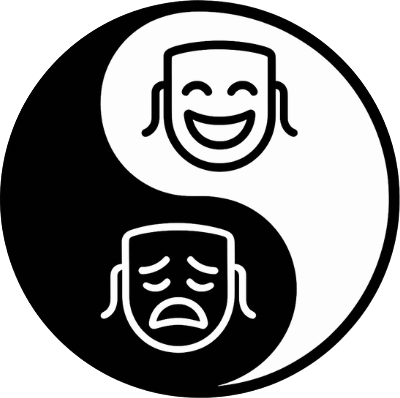The Power of Preparatory Routines
It's a shame so few actors know that we don't have to "feel good" in order to "perform good".[1] Oh, the heartbreaks and headaches we'd spare ourselves...
However, it's understandable that we might want to feel good regardless. As has been pointed out, "It is useful to remember occasionally that life unfolds as a chain of subjective experiences. […] The quality of these experiences determines whether, and to what extent, life was worth living".[2]
As you may have experienced before a self-tape or five-minute call, how we feel pre-performance can significantly influence how we feel during and post-performance. Fortunately, though, we can turn to evidence-based suggestions from sport psychology to maximise our likelihood of vibin' the vibe. Consequently, us Dojo kids believe that preparatory routines can hold a valuable place in the actor's process – which is what we'll unpack in this article.
Backed by science; built for the stage and screen.
👊 Actors:
Get evidence-informed insights and strategies to support your performance and well-being. Join the Dojo e-newsletter tribe and make thriving your reality.
🧭 Drama schools & Production companies:
Bring pioneering, research-backed coaching into your classroom or rehearsal room. Let's talk about supporting your actors to perform at their peak – and stay well in the process.
Understanding the power
This will come as no huge surprise, but preparation is one of the few factors consistently tied to "the likelihood of effective performance under pressure".[3] It's also of no huge surprise, then, that the use of preparatory routines has been associated with moderate-to-large effect sizes in sport science research,[4] helping athletes better direct attention and regulate emotion when the pressure's on.[5]
Whilst preparatory routines can technically be broken down into three further categories – routines followed in the lead up to performance day, routines followed immediately pre-performance, and routines followed immediately post-performance[6] – we'll focus on the most common category: the routines followed immediately pre-performance. Like any other routine you may have, pre-performance routines are an intentional and systematic "sequence of task-related thoughts and actions".[7] The only difference here is that these routines are explicitly for the purpose of peak performance and / or experience, occurring immediately before executing a specific performance activity.
In addition to demonstrating their efficacy, pre-performance routines have also shown their accessibility, proving beneficial regardless of athlete age, gender, or competitive level.[8] How can we not love an effective tool that is available to all?
Wielding the power
So, how can we go about wielding the power of pre-performance routines?
First, it's key to highlight that pre-performance routines aren't a one-and-done dance. Instead, they're context-dependent. As a result, we may need to slightly adapt or adjust our routines from gig to gig. Consequently, it helps to start by identifying what we would consider the "optimal" state to inhabit pre-each specific performance. Some performances, for instance, may require us to be uber hyped; others may require us to be more poised. It would make sense to craft our routine with this state in mind, no?
Next, we'll want to take stock of what practices we already tend toward. In our 1-on-1 coaching work, we've heard a wiiiiide range of go-tos. Some actors jump rope; other actors hit the yoga mat. Some call a friend before curtain up; others don't want to speak to anyone until curtain down. Some actors read a novel in their trailer; other actors review their script on set. No need to fix what ain't broke.
We can also find inspiration in common practices of athletes, dancers, and musicians,[9] [10] [11] with whom pre-performance routines have been more extensively studied. Some examples include:
- Mindfulness- and acceptance-based modalities.
- Goal setting.
- Mental rehearsal.
- Self-talk.
- Spiritual or faith-based practices.
Once we've curated a sequence of activities (or even a single activity), we can follow the Learning-Modification-Application model to increase our chances of our routine sticking and succeeding.[12] Ideally, this would see us practice and learn our routine under light stress conditions, such as in rehearsals. Then, under moderate stress conditions (tech week, for instance), we would practice and modify our routine to align more closely with performance demands. Finally, we would execute and apply our routine under high stress conditions (hello, previews! 😅). Of course, we can continue to adapt and adjust as needed, knowing we've built an evidence-based foundation.

Again, to underscore what must be underscored, we don't have to "feel good" to "perform good".[13] In fact, simply distinguishing between having to and wanting to can be a game-changer in and of itself. Still, "life unfolds as a chain of subjective experiences", and "the quality of these experiences determines whether, and to what extent, life was worth living".[14] Enjoy wielding your new superpower!
Love what you're reading? Help us keep it flowing. Donations support the research, writing, and free sharing of evidence-informed tools for actor performance and well-being. Every dollar fuels our mission to make thriving a reality for actors everywhere 🔥
Citations
[1] [13] https://amzn.to/4iLf3K3 (p. 53)
[2] [14] https://doi.org/10.1007/978-94-017-9088-8_14 (p. 209)
[3] https://doi.org/10.1080/21520704.2011.584245 (p. 17)
[4] [8] https://doi.org/10.1080/1750984X.2021.1944271
[5] [6] [12] https://doi.org/10.3389/fpsyg.2022.948512
[7] https://doi.org/10.4324/9781315784946 (p. 177)
[9] https://researchonline.rcm.ac.uk/id/eprint/2522/1/Berenice Beverley Zammit - PhD Thesis REDACTED.pdf
[10] https://doi.org/10.1123/tsp.2014-0035 (p. 161)
[11] https://doi.org/10.1177/1321103X9400200105 (p. 32)
Cite us!
IG: @theactorsdojo
APA 7: Norrish, T. (2025, August 3). The power of preparatory routines. The Actor’s Dojo. https://www.dojoactors.com/preparatory-routines/
